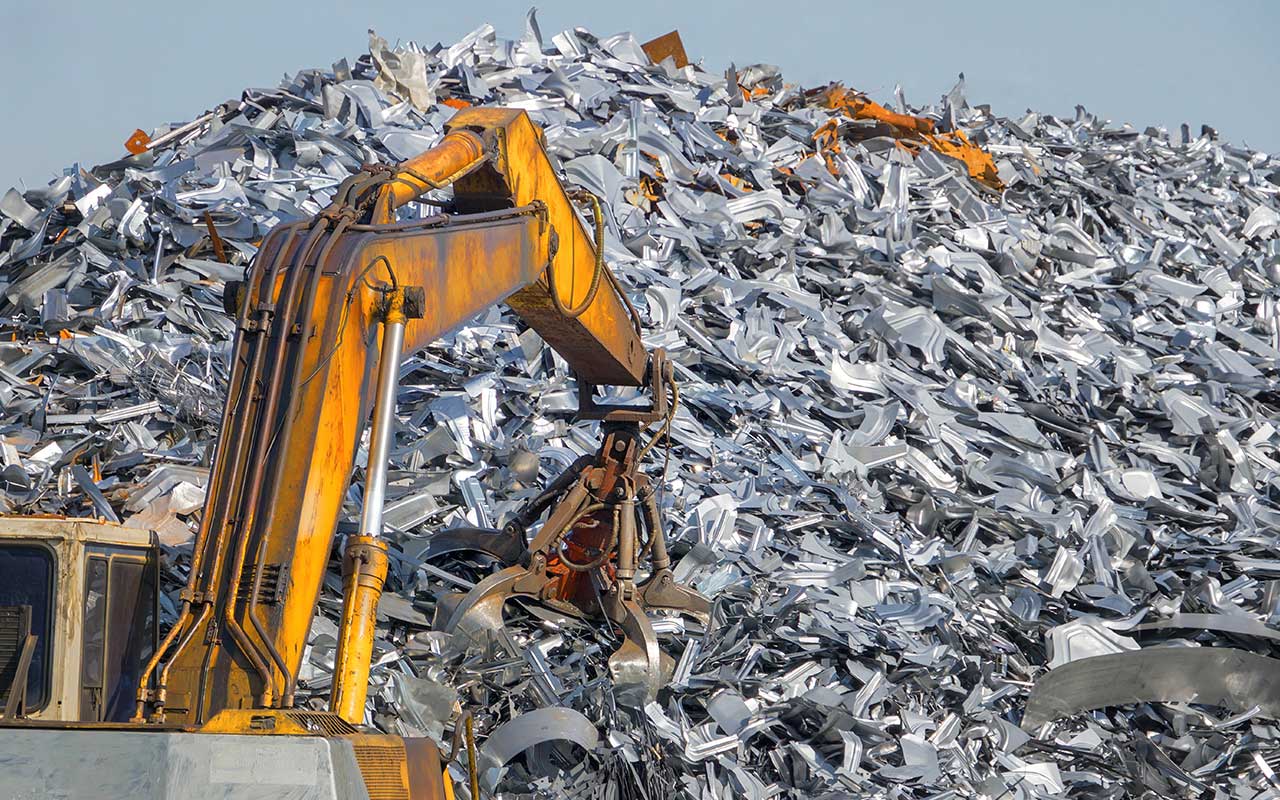Scrap Metal Recycling Process: How Is It Done?
Have you ever wondered what happens to all the metal from your old cars, your household items, and other stuff that you give away to a scrap collector?
Where does all the metal go? Do they dump it in a landfill like all the plastic waste or is it turned into something useful? If you have even the slightest bit of curiosity regarding the scrap metal recycling process then you are at the right place.
In this section, we will be looking at how your scrap metal is recycled and made useful again. The real motive behind the Scrap metal recycling process is to turn scrap metal into something useful of different shapes and sizes.
As recycling scrap metal and reusing them reduces the direct dependence on ores and the use of other resources, it reduces the depletion of natural resources.
Carrying out an eco-friendly scrap metal recycling process means that no fuel gases or substances are released into the environment. So it serves a good purpose in many ways.
Scrap Metal Recycling Process Steps:
Metal Collection
Scrap metals are rarely picked by municipal trash or other waste disposal services. When you have scrap metal at your place, it can be a pain in the neck.
However, to make things easier for you, there are plenty of metal recyclers in your area that are providing scrap metal removal services.
If you have big chunks of scrap metals, they can come to your doorstep to get them removed. But if your scrap metals are small in size, you might have to take them to them.
Usually, metal recyclers collect scrap metal from scrap vehicles, although other sources can include steel structures, ships, railroad tracks, farm equipment, and consumer scraps like appliances, office furniture, and other items.
Sorting
The next process is sorting. All the collected metals come attached to something. For example, metal from an old office chair comes with plastic, wood, and leather too.
Separating metal from other parts makes the recycling process a lot easier and quicker. Recyclers use magnets and sensors to separate these materials. At this stage, metals like aluminum, steel, iron, etc are separated from each other.
This way they can be processed separately.
Processing
Firstly, the metals are squeezed and squashed using crushers so that they do not occupy much space in the conveyor belt. All metals are given specific shapes. For example, iron is converted into cubes whereas aluminum to sheets.
Then the squeezed metals are converted into tiny pieces or sheets. In doing so, it becomes easier for further processing. These small broken pieces do not require much energy during melting.
So the melting process can be really efficient.
Melting
Scrap metals are then kept in a furnace under high heat and pressure. Each metal is taken to a specific furnace designed for that particular metal.
Depending on the size of the furnace and the amount of metal, melting can take anywhere from a few minutes to hours.
Most furnaces have foul-efficient regenerative burners designed to reduce the amount of energy being used so there is a minimal impact on the environment.
Purification
Metal purification is done to ensure the final product offers high quality and is free of contaminants. Electrolytic refining or electrolysis is the most common method used for metal purification.
The electro-refining process is quite easy to understand. A block of impure metal is kept at the anode and a thin sheet of metal at the cathode. Both these electrodes are dipped in a cell containing an aqueous solution of metal salt.
Upon exposure to the electric current of a suitable voltage, pure metal is deposited at the cathode by the dissolution of impure metal at the anode.
Solidifying
Once a pure metal is obtained, it’s solidified and molded into the required shape. The molten pure metal is carried by the conveyor belt to cool down and solidify. After this, the metal can be given any shape according to the manufacturer’s needs.
What are the benefits of scrap metal recycling?
Here are a few of the many benefits of scrap metal recycling.
- Recycling of scrap metals contributes to reduced production of waste and toxic by-products.
- Recycling of scrap metals not just helps prevent the formation of the metal landfill but also helps to prevent environmental pollution to some extent.
- When scrap metal is recycled, ores and natural resources are not as exploited as they would be while manufacturing.
- The scrap metal Recycling Process decreases carbon emissions as it reduces the need for metal mining which generally involves bombing, tunneling, and usage of coal.
- Scrap Metal Recycling Process is far more energy-efficient than metal mining which involves sedulous efforts to extract ores from mines, metals from ores, and finally to purify extracted metals.
- We can reduce the emission of greenhouse gases by up to 500 million tons when we recycle metals.
One of the best things about the scrap metal recycling process is that it gives a new life to the unused and garbage metal that we have in our homes.
So next time you think about just tossing away your scrap metal, consider how easily it can be turned into something useful again. And also how it carries a lot of health benefits for our planet.

